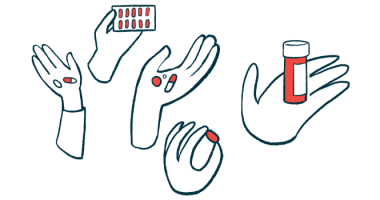PPMD Publishes 10-Year Duchenne and Becker Patient Registry Report
by |

Parent Project Muscular Dystrophy (PPMD) has published a report outlining key results of its decade-old study of some 4,000 registered Duchenne and Becker muscular dystrophy patients.
Representing more than 100 countries, the nonprofit organization’s Ten Year Registry Report is a compilation of data provided by Duchenne Registry patients, plus input from collaborative clinicians and investigators.
Most patients in the registry are from the United States (70%), followed by India (5%) and Canada (4%).
The patient-reported, PPMD-funded registry is the largest and most comprehensive repository of data for those living with Duchenne and Becker. To fulfill a need for a resource that would connect and serve the muscular dystrophy community, the registry began in 2007 and was launched a year later.
“Because families continue to join and update their account in the Duchenne Registry, they are strengthening the power of this 10-year network of patient-powered data that will be used to improve care for people living with Duchenne, and increase understanding of the disorder,” Ann Martin, Duchenne Registry director, said in a press release. “Families have become citizen scientists by contributing to real scientific research, without ever leaving their homes.”
When the 32-page report was compiled, the breakdown of registry participants was 76 percent with Duchenne muscular dystrophy (DMD), 7 percent with Becker muscular dystrophy (BMD), 7 percent with Duchenne or Becker (diagnosis unclear), and 10 percent female.
Connect with other people and share tips on how to manage Muscular Dystrophy in our forums!
Among the findings was that the average age at diagnosis in the U.S. for DMD is 4 years old and 10 years old for BMD. The average age at which symptoms were first noticed was 2.5 years for DMD and 7 years for BMB.
According to the Centers for Disease Control and Prevention, the estimated prevalence of Duchenne and Becker muscular dystrophy is 1 in every 7,250 males between the ages of 5 and 24 years.
Other findings PPMD believe will be key to scientists and others focused on Duchenne treatments include:
- The top three categories of registrant genetic mutations are: whole exon deletions, 65%; nonsense mutations, 13%; and whole exon duplications, 10%. Axons are the portions of genes that actually code for proteins. Nonsense mutations are those where the inserted error in the DNA leads to a premature stop sequence signal (codon) in the production of the protein.
- Most registrants use or have used corticosteroids. However, 35% report having never used them.
- The average age of ambulation loss for those who have never used corticosteroids was 10 years old. On average, ambulation is extended by a year with prednisone use, and two years with Emflaza (deflazacort).
- A comparison between the years 2007-2012 and 2013-2017 revealed that corticosteroid use became more prevalent in older, non-ambulatory male Duchenne patients.
- Another comparison of those time periods showed that the use of breathing devices and echocardiogram among Duchenne patients rose across most age groups, with more consistent use of devices, echocardiogram, and corticosteroids in older ages. PPMD suggested that better adherence to standard of care guidelines, first published in 2010, could be responsible for increased use among older patients.
The process of data examination began in late 2017, when PPMD exported all registry data. After the information was de-identified — stripped of patient identity to preserve privacy — it was given to a team of analysts at RTI International Center for Newborn Screening, Ethics, and Disability Studies.
In terms of information usage, PPMD said pharmaceutical companies frequently request data for use in identifying clinical trial sites, and some request specific criteria to identify prospective candidates. The registry is said to have helped researchers recruit for more than 60 clinical trials.
Additionally, the information has been used by several publications and alluded to in scientific presentations. It has also been used by the PPMD to identify community needs and priorities. The organization is considering further data exploration.
Only PPMD members who are part of the central registry team have access to registrants’ medical information.
For more registry information, visit the PPMD website.
In related news, the organization recently teamed up with THREAD, a company specializing in remote/virtual patient research, to improve the registry’s patient engagement and care management tools.







